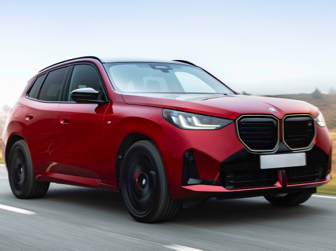Are you looking for a stylish, social, and affordable urban hatchback? The 2020 Toyota Starlet might be the answer. Replacing the recently discontinued Etios, the all-new 2020 Toyota Starlet is the first product from the Toyota-Suzuki joint venture, which was announced in August last year.
While Toyota named the hatchback Starlet, Suzuki is selling it with the Baleno badge. In the South African auto market, both these cars are competing against the Ford Figo, Volkswagen Polo Vivo, and Renault Sandero. Let’s discuss the 2020 Toyota Starlet in detail:
.jpg)
Toyota is offering the Starlet in three trim levels namely Xi, Xs, and XR, all carrying the same engine and a choice between manual and auto gearbox (the auto is not available for the base Xi). The compact hatchback carries a 1.4-litre DOHC four-cylinder engine boasting Variable Valve Timing (VVT) generating 68kW at 6,000 rpm and 130Nm of torque at 4,200 rpm. You can either pair the mill with a five-speed manual or a four-speed automatic, both routing power to the front wheels only. The Starlet can zoom from zero to 100 km/h in 10.9s with the manual transmission and 11.6s with the auto.
The company says the 2020 Toyota Starlet is more economical with the manual delivering 5.1-litres/100km fuel consumption and 5.4-litres/100km with the auto.
.jpg)
The Starlet and the Suzuki's Baleno look pretty much the same – the difference is evident from the front grille and the badging, of course. The Toyota offering comes with the V-shaped front grille, downward-sloping nose, vertically-set headlights with chrome inserts, and rounded-off rear hatch. At the back, it features big LED taillights with red and radiant accents.
The interior is spacious and ergonomically designed with air conditioning, a traditional (non-touchscreen) audio system with six speakers and Bluetooth connectivity, steering wheel controls, electric windows, and mirrors. If you really want the best of both worlds, we suggest you opt for the XR trim level, which comes with a touchscreen infotainment system supporting Android Auto and Apple CarPlay, a reverse camera, cruise control, a leather-covered steering wheel, keyless start, park distance control, and four airbags.
.jpg)
Safety is always at the forefront of Toyota's designs and the Starlet is no different. For a B-segment, affordable compact, Toyota is offering ABS, EBD, Brake Assist (BA), and Vehicle Stability Control (VSC). Opting the Starlet with automatic transmission adds the Hill Assist Control (HAC) in the standard equipment.
While the Xi and Xs variants come equipped with Driver and Passenger (D+P) airbags, the XR also has Curtain and Side airbags (C+S).
.jpg)
The base Starlet Xi starts at R204 900. The Xs costs R215 200 with manual and R235 700 with auto. The top-of-the-line XR starts at R258 500 for manual and R272 500 for auto.
The new Starlet comes with three services or a 45,000km service plan (with 15,000 km service gaps) and a three-year or 100,000km warranty. Customers can also opt for the extra service plan and warranty extension.
.jpg)
The new 2020 Toyota Starlet is a good addition to South Africa’s vehicle market. While Etios wasn’t bad in terms of sales, its old-fashioned design and lack of auto transmission played against its continuation. We hope the new Starlet will fill the gaps created by the Etios and improve the company’s sales.
Looking for a new car? Check out this review on the 2020 Renault Triber
Please note the imagery supplied in this blog was taken off www.businesslive.co.za
Will motorists help fund the Gautrain expansion?
Used car shopping? Includes Extended Warranty, and other tips


